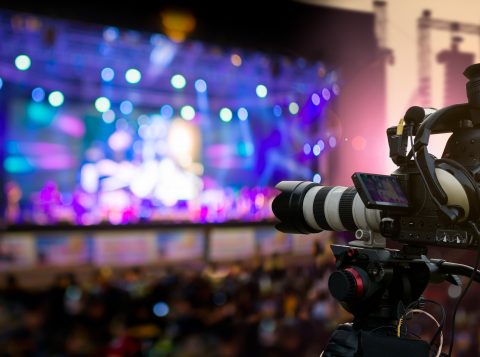
Behind the Scenes: How a Corporate
Overview
Corporate videos are currently indispensable instruments of storytelling, branding, and communication for the contemporary enterprise. It takes diligent planning, organization, and technological savvy to create a professional film, although the final product would look so effortless and perfect. Companies might collaborate more effectively and achieve higher-quality results if they know more about what occurs in the background of a corporate video production agency.
This article shows how agencies go from concept to screen, stepping you through the entire production process step by step.
Phase 1: Laying the Groundwork for Pre-Production
Most of the logistical and creative groundwork is laid during pre-production. Since it lays out the direction for the project as a whole, this phase is vital.
- Initial Consultation and Defining Objectives
The agency and the customer sit down to discuss what the purpose of the video is. Internal training, that is correct? A brand promotion? Event coverage? Understanding the objective will inform all subsequent decisions.
- Messaging and Audience
Who will be watching this video? What are the key points they need to take away? Defining the target audience helps define the content, tone, and style.
- Storyboarding and Scripting
The crew creates a script, either interview or narrative, and can create a storyboard to show each scene once the objectives have been decided. This ensures that client and agency align on creative before filming begins.
- Logistics Planning
All logistical aspects are handled by the production company, such as:
- Scouting locations
- Casting of talents (if necessary)
- Creating a schedule
- Insurance and permits
- List of equipment
A properly planned pre-production ensures that the shoot remains on schedule and budget and avoids surprises on set.
Phase 2: Bringing the Vision to Life through Production
Everything in place, the production day or days involve shooting according to the schedule and storyboard.
- Setup on-set
To install lights, sound gear, cameras, and staging, the team comes in early. The goal is to create a refined environment that supports great sound and images.
- Shooting
All shots, regardless of whether the shoot is for one day or several days’ production, are taken with great care.
This may include:
- Installing interviews with suitable background and illumination
- B-roll, or background video, of workplaces, group activities, or infrastructure
- Voiceover recordings or scripted scenes
- Corporate media production to allow themselves greater editing freedom, agencies often capture more video than they need.
- Guidance and Input
A director or producer ensures each shot adheres to the initial plan. One can incorporate real-time feedback in case the client is around. Otherwise, review video can be provided for feedback subsequently.
Post-Production Phase 3: Creating the Final Story
Raw footage is converted into a meaningful and engaging video in post-production.
- Review and rough cut of the footage
Following review of each shot, the editorial team selects the optimal shots and creates a rough cut. Typically, this version is shared with the client for initial feedback.
- Audio and Visual Enhancements
Also included under post-production are color correction and grading.
- Animations or motion graphics
- Sound effects and music
- Voiceover integration
- If needed, captions or subtitles
Every one of these elements is a part of making the video shine, amplifying its power and effect.
- Revisions
Customers usually get one or two rounds of revisions. The last edit will be according to brand tone and message if communication is good during this phase.
- The Final Delivery
The finished video is sent by the agency in a variety of formats appropriate for internal platforms, websites, social media, and presentations.
Phase 4: Distribution Strategy Option
Additionally, certain agencies help with strategy or content distribution:
- Social media platform optimization of the video (e.g., vertical vs. horizontal formats)
- Making teaser versions or shorter clips
- SEO-optimized thumbnails and metadata
- Performance metrics (number of views, interaction, and retention)
Even though it is not part of the package every time, this will increase the value of the video by getting more viewers.
Tips for a Successful Alliance
These are some tips to ensure that things run more easily if you’re planning to work with a corporate film production houses in dubai:
- Clearly specify your goals initially.
- Give prompt comments during critical review stages.
- Be open to fresh ideas; agencies bring their picture and narrative knowledge.
- Give edit time. Hasty editing all too often ends up being not as good.
Consider where and how you will use the video beforehand. That influences length and format.
Conclusion
A well-prepared business film requires careful preparation, creative storytelling, and technical precision. Businesses can make informed decisions, communicate more effectively, and ultimately create content that resonates with their audience if they understand the inner mechanisms of a corporate video production agency.
FAQs
- How long does it take to produce a business video?
The majority of jobs complete in three to six weeks from inception to final delivery, although this will depend on complexity.
- Can we provide our own script or voiceover?
Yes, many agencies are flexible. While the agency will likely make suggestions to ensure quality, you can provide your own script, voice actors, or brand materials.
- What if we need to shoot in a number of locations?
That’s typical of larger projects. If needed, the agency will coordinate crew, permits, and logistics on locations.
- Do we need to be present at all times during the shoot?
Not necessarily. Although some clients allow the agency to film independently on their property and view the tape afterwards, others prefer to be on location.
- What are the qualities that should be kept in mind while choosing a video production company?
Look at their work, ask about their approach, and check if they have your goals. Technical expertise and good communication skills are essential benchmarks.










